Recent Media and Research done by observers using the Burke-Gaffney Observatory
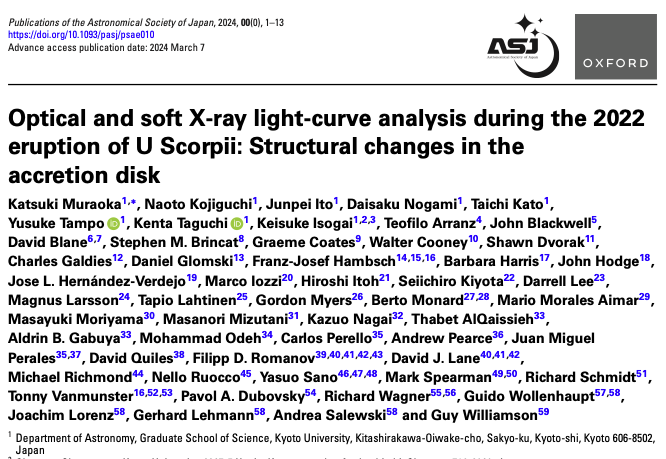 |
2024-March-7: The research article "Optical and soft X-ray light-curve analysis during the 2022 eruption of U Scorpii: Structural changes in the accretion disk" has been published in the Publications of the Astronomical Society of Japan on March 7, 2024 with remote observer Filipp Romanov (ID=899) and BGO Director Emeritus David J. Lane as co-authors. This was done based on observations done remotely through the Burke-Gaffney Observatory, Abbey Ridge Observatory, and itelescope.net. Preprint: https://arxiv.org/abs/2402.06347 |
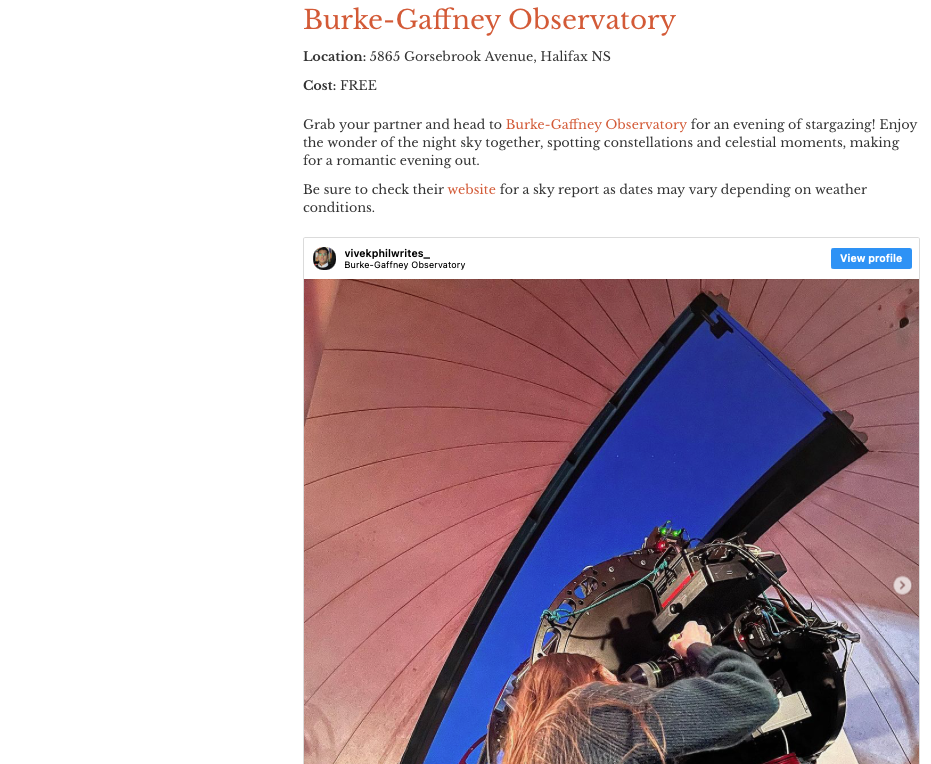 |
2024-February-20: The Burke-Gaffney Observatory has been listed as one of the "Best Budget Friendly Date Ideas Around Halifax" by DateNight Canada. Clear skies! |
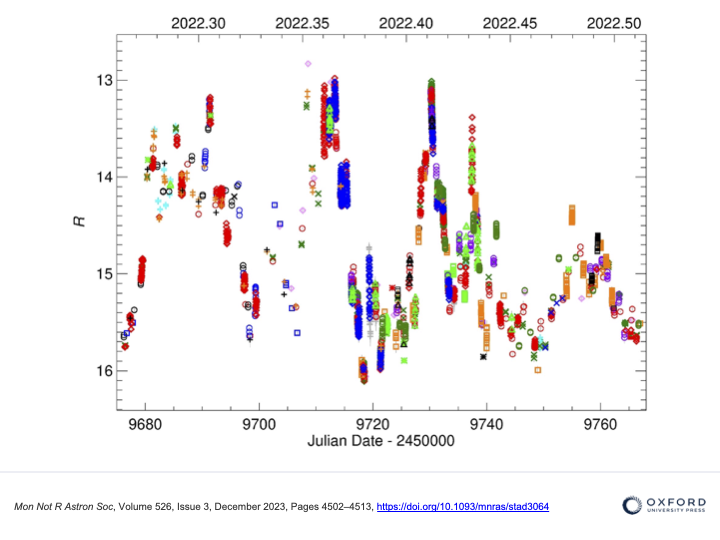 |
2023-October-09: AAVSO observer and remote observer Filipp Romanov (ID=899) observed blazar S4 0954+65 remotely using 0.61-m telescope of Burke-Gaffney Observatory (in 2022 he wrote ATel #15399 https://astronomerstelegram.org/?read=15399 "Follow-up optical photometry of flaring blazars S4 0954+65 and 1308+326 (AU CVn)" about this) and on October 9, 2023, the paper co-authored by Filipp "Extreme photometric and polarimetric variability of blazar S4 0954+65 at its maximum optical and γ-ray brightness levels" was published in Monthly Notices of the Royal Astronomical Society (MNRAS) and is available on arXiv; arXiv:2310.11108. Snippet provided by Filipp Romanov. |
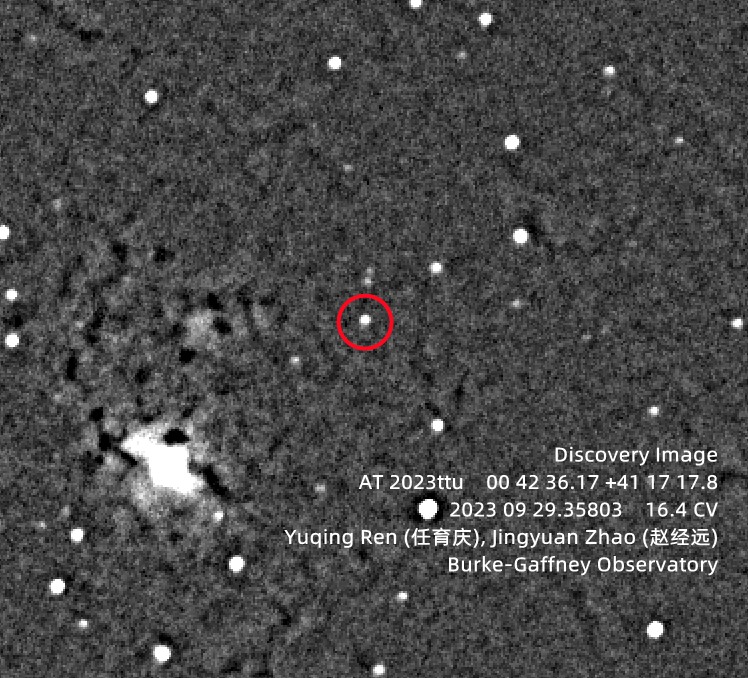 |
2023-September-30: Remote observers Jingyuan Zhao (ID=759) and Yuqing Ren (ID=1170) discovered a bright nova candidate in M31 (Andromeda Galaxy) on the night of September 29, 2023. After reporting to the IAU's Transient Name Server and the Central Bureau of Astronomical Telegrams, it was numbered AT 2023ttu, PNV J00423617+4117178 and later confirmed spectroscopically by Italian amateur astronomer Claudio Balcon and Japanese astronomer Kenta Taguchi, confirming that AT 2023ttu is indeed a nova! Find the IAU's TNS article about AT 2023ttu, the notice on the Central Bureau of Astronomical Telegrams, and on the Astronomer's Telegram, ATel#16263. Jingyuan posted about this on the Robotic Imaging Facebook group as well. |
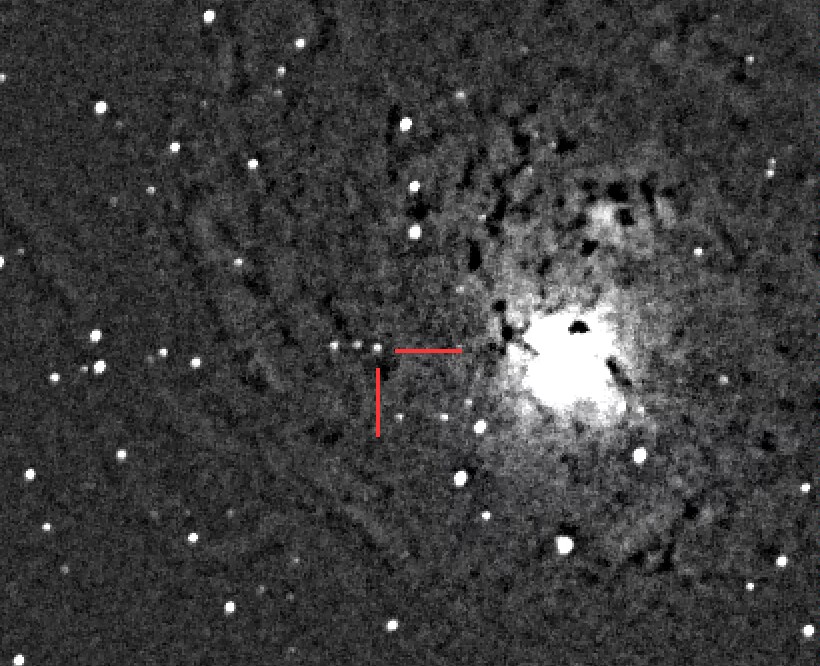 |
2022-October-18: Remote observer Jingyuan Zhao (ID=759) contributed to a research paper available on arXiv (arXiv:2210.08618) which included observations by the Burke-Gaffney Observatory of recurrent nova M31N 2022-09a in September 2022. It is the fifth outburst of M31N 1926-07c and currently the second shortest nova recurrence time known after the ~1 year interval for M31N 2008-12a. After the images were taken, the discovery was confirmed in ATel 15608 and ATel 15609 and is noted here. Jingyuan has posted on Twitter and in the Robotic Imaging Facebook group about this. The paper is published in RNAAS: Allen W. Shafter et al 2022 Res. Notes AAS 6 214 https://doi.org/10.3847/2515-5172/ac9ab9 |
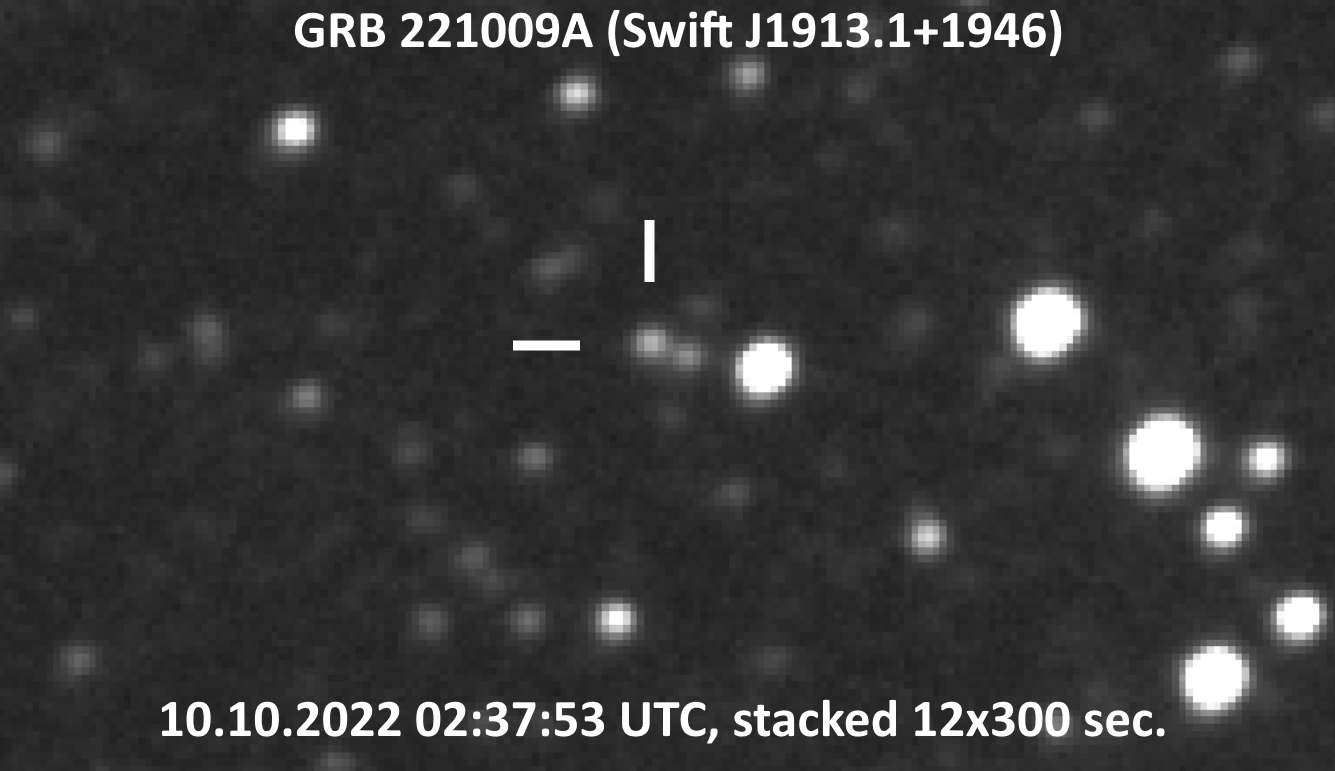 |
2022-October-11: Remote observer Filipp Romanov (ID=899) observed gamma-ray burst GRB221009A using BGO on the night of Oct. 9, 2022. Read the NASA Circular and an article on Science Alert about it. Romanov was later interviewed about his use of the BGO in the article here (translation may be necessary). |
Have something to add? Let us know by contacting us!
